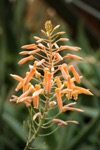Notice (8): Undefined index: geoplugin_countryCode [APP/Controller/AppController.php, line 94]Code Context$Country_code = '';if($ip_data && $ip_data['geoplugin_countryCode'] != null) {$Country_code = $ip_data['geoplugin_countryCode'];$client = null $forward = null $remote = '216.73.216.24' $ip = '216.73.216.24' $ch = unknown $ip_data_in = '{ "geoplugin_status":429, "geoplugin_message": "Blacklisted due to sending too many requests to geoplugin.net. Consider whitelisting your IP or domain", "geoplugin_url": "https://www.geoplugin.com/premium/" } ' $ip_data = [ 'geoplugin_status' => '429', 'geoplugin_message' => 'Blacklisted due to sending too many requests to geoplugin.net. Consider whitelisting your IP or domain', 'geoplugin_url' => 'https://www.geoplugin.com/premium/' ] $Country_code = ''App\Controller\AppController::initialize() - APP/Controller/AppController.php, line 94 App\Controller\ProductsController::initialize() - APP/Controller/ProductsController.php, line 31 Cake\Controller\Controller::__construct() - CORE/src/Controller/Controller.php, line 273 ReflectionClass::newInstance() - [internal], line ?? Cake\Http\ControllerFactory::create() - CORE/src/Http/ControllerFactory.php, line 47 Cake\Http\ActionDispatcher::dispatch() - CORE/src/Http/ActionDispatcher.php, line 91 Cake\Http\BaseApplication::__invoke() - CORE/src/Http/BaseApplication.php, line 235 Cake\Http\Runner::__invoke() - CORE/src/Http/Runner.php, line 65 Cake\Http\Runner::__invoke() - CORE/src/Http/Runner.php, line 65 Cake\Http\Middleware\CsrfProtectionMiddleware::__invoke() - CORE/src/Http/Middleware/CsrfProtectionMiddleware.php, line 104 Cake\Http\Runner::__invoke() - CORE/src/Http/Runner.php, line 65 Cake\Http\Runner::run() - CORE/src/Http/Runner.php, line 51 Cake\Routing\Middleware\RoutingMiddleware::__invoke() - CORE/src/Routing/Middleware/RoutingMiddleware.php, line 168 Cake\Http\Runner::__invoke() - CORE/src/Http/Runner.php, line 65 Cake\Routing\Middleware\AssetMiddleware::__invoke() - CORE/src/Routing/Middleware/AssetMiddleware.php, line 88 Cake\Http\Runner::__invoke() - CORE/src/Http/Runner.php, line 65 Cake\Error\Middleware\ErrorHandlerMiddleware::__invoke() - CORE/src/Error/Middleware/ErrorHandlerMiddleware.php, line 96
| Scientific: | Aloe vera |
|---|---|
| Other: | Aloe gel |
| Family: | Liliaceae |
| Synonym: | Aloe barbadensis |
Aloe vera (Aloe barbadensis) grows in arid climates around the world. This cactus-like plant produces two distinct medicines from the gel and latex resin.
ALOE GEL. The succulent leaves produce a gel comprised mainly of glucomannan polysaccharides. It hastens wound healing by increasing the synthesis of collagen and elastin, reducing inflammation and also hydrating the skin. Research supports the topical application of the gel to speed healing of thermal burns, skin-grafts. However, aloe appears ineffective at preventing or treating radiation burns and sunburns. Gel polysaccharides modulate the immune system and facilitate antibody production imparting it with antiviral activity. Aloe gel shows promising results for other disorders including lichen planus, psoriasis, aphthous stomatitis, herpes, warts, seborrheic dermatitis.
ALOE RESIN. The inner leaf contains a bitter latex resin that contains anthraquinone glycosides. Like other herbs that include these compounds (senna, rhubarb, buckthorn), aloe resin act as stimulating laxatives. Anthraquinone glycosides travel to the large intestine where gut bacteria remove the sugar (glycoside) thus activating them. Free anthraquinones stimulate peristalsis and prevent electrolyte resorption from the lumen of the bowel thus increasing the volume of water in the bowl. The resin typically produces bowel movements with 6-8 hours of oral administration.
Inner leaves contain anthraquinones and have stimulating laxative effects, whereas the gel is high in mucilage. See 'Senna' for discussion about stimulating laxatives. Gel uses are discussed below:
Gastrointestinal (gel, internal use)
• dysfunctional bowels
• diarrhea
• constipation
• irritable bowel syndrome (IBS)
• general inflammation
• gastritis
• peptic ulcer
Dermatologic (gel, topical use)
• wounds
• ulcers
• burns
• leg ulcers
• pressure ulcers
• varicose veins
• psoriasis
• eczema
• anal fisures
• seborrhoeic dermatitis
Immune
• viral infections
• HIV
Succus (Gel):
• Vulnerary
• Antiinflammatory
• Bulk Laxative
• Emolient
• Immunostimulant
• Antiviral
Gel:
• Carbohydrates (E.g. Acemannan )
Succus (gel)
• Topical (gel): apply the gel liberally to wounds
• Oral (gel): 25 ml of aloe juice qd-qid
• Gel: Generally considered safe when used as indicated.
• Resin: See senna for safety concerns regarding anthraquinones.
• Hypoglycemics • the gel may potentiate their action. Monitor patients blood glucose.
• Hydrocortisone • increased antiinflammatory effects when combined with gel.
Barnes J, Anderson LA, Phillipson JD. Herbal Medicines, 3rd ed. London: Pharmaceutical Press, 2007.
Bone K. Principles and Practice of Phytotherapy. Edinburgh: Churchill Livingstone, 2000.
Bone K. A Clinical Guide to Blending Liquid Herbs: Herbal Formulations for the Individual Patient. St Louis, MO: Churchill Livingstone, 2003.
Brinker F. The Toxicology of Botanical Medicines, 3rd ed. Sandy, Oregon: Eclectic Medical Publications, 2000.
Felter HW, Lloyd JU. King's American Dispensatory. 1898. http://www.ibiblio.org/herbmed/eclectic/kings/main.html. Accessed: August 19, 2006.
Hoffman D. Medical Herbalism. Rochester, Vermont: Healing Arts Press, 2003.
Weiss RF. Herbal Medicine. Beaconsfield, England: Beaconsfield Publishers Ltd, 1988.
Williamson EM, ed. Major Herbs of Ayurveda. Edinburgh: Churchill Livingstone, 2002
Disclaimer: This content is subject to change. The information is intended to inform and educate; it does not replace the medical evaluation, advice, diagnosis or treatment by a healthcare professional. www.nhpassist.com © 2014 NDAssist Inc. and/or its affiliates. All rights reserved.

|
Aloe gel
SummaryAloe vera (Aloe barbadensis) grows in arid climates around the world. This cactus-like plant produces two distinct medicines from the gel and latex resin. IndicationsSign in requiredActionsSign in requiredConstituentsSign in requiredPosologySign in requiredSafetySign in requiredInteractionsSign in requiredReferencesSign in required |
|---|